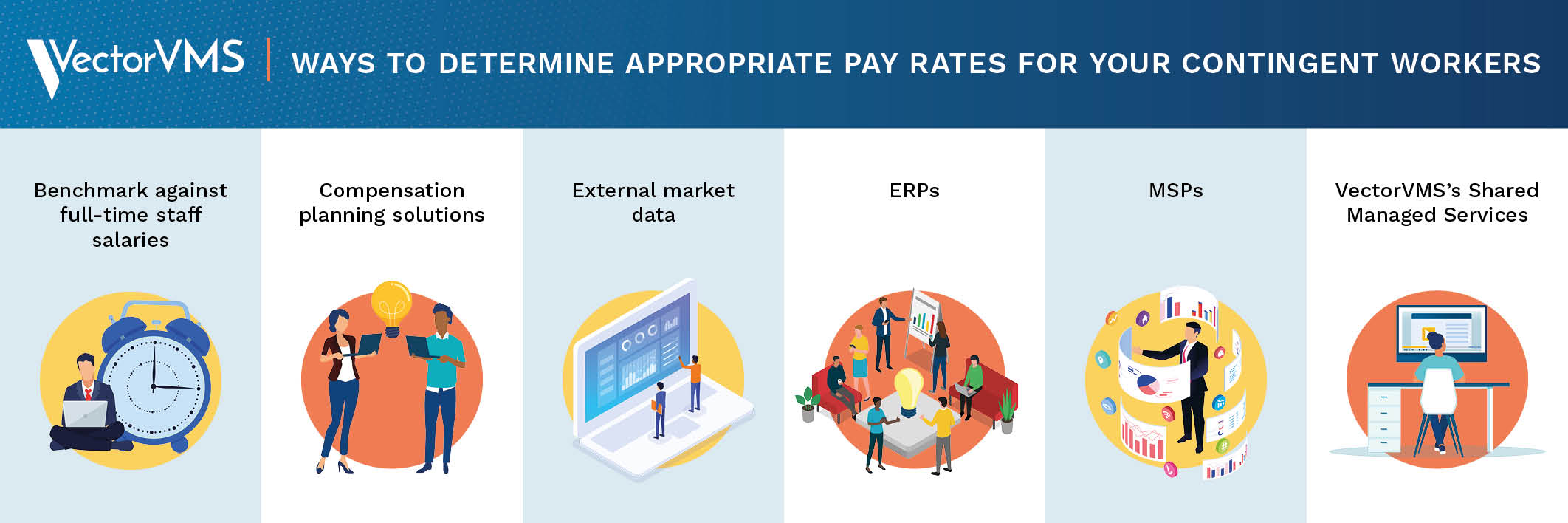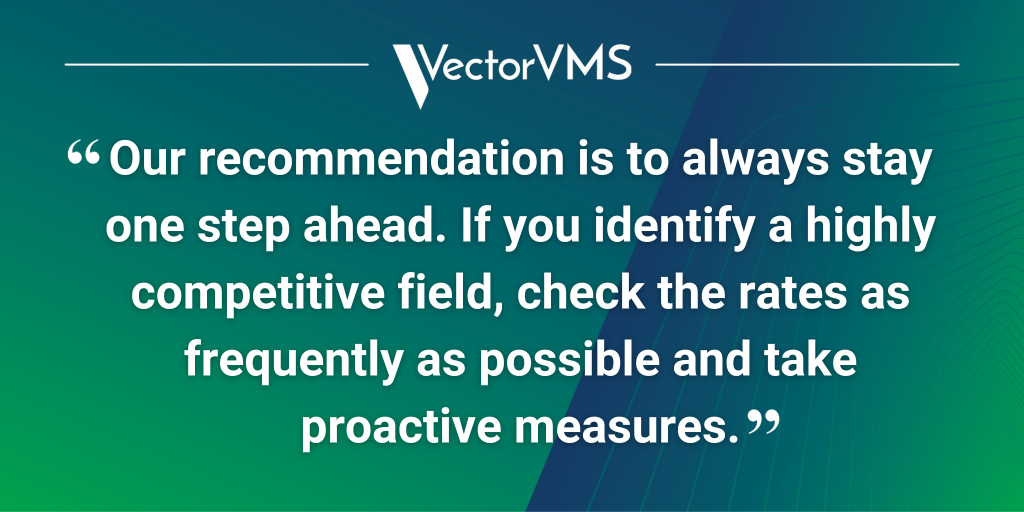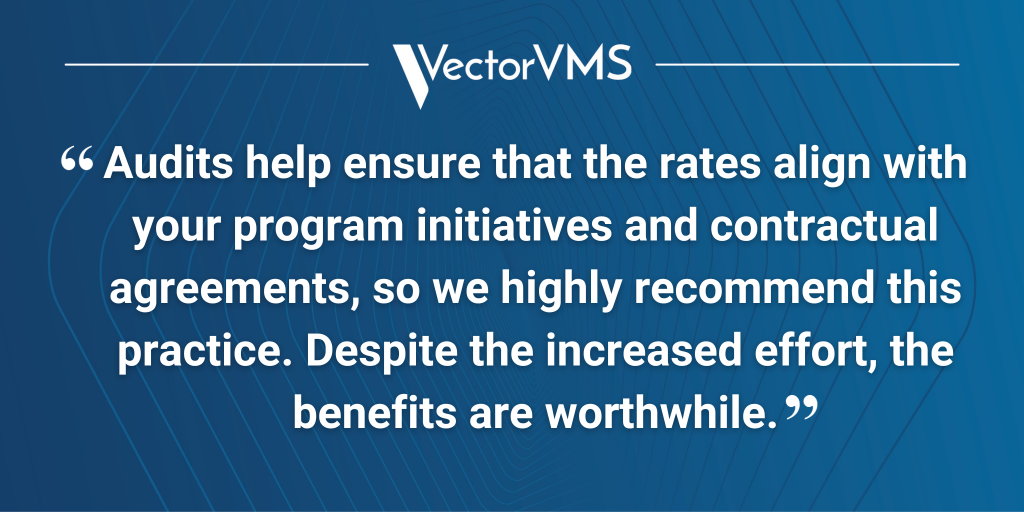Your contingent workers are a vital part of your organization, so when it comes to compensating them, is there room for improvement? Absolutely! To achieve this, we believe it’s important to incorporate rate management into your talent ecosystem. Rate management involves overseeing and controlling the bill rates paid to staffing agencies, ensuring that your employees’ compensation aligns with market standards.
The primary benefit is a reduction in talent turnover. However, achieving this requires an awareness of the specific challenges associated with this practice. In this article, we’ll delve into these challenges and offer guidance on how to overcome them. By addressing these issues, your organization can enhance its ability to retain top talent.
Let’s dive in!
Challenge #1: Determining the Appropriate Rates
You’d rather not overpay or underpay for your talent, but identifying the “sweet spot” can be difficult without a point of reference. The starting point for this should be market data, and since your organization is already a part of that market, you can approach this in various ways:
- If you have a dedicated compensation team, you can work with them, taking full-time positions as a reference to calculate the payment for contingent workers.
- Some advanced compensation software solutions can integrate external market data. You can gather the information there and also research staffing websites for additional insights.
- You can gather data from enterprise resource planning (ERP) software connected with your staffing agencies.
- You can rely on Managed Service Providers (MSPs) or the VectorVMS Shared Managed Services (SMS) hybrid program to help you establish the rate structure.

Additionally, remember to review your rates at least annually to ensure they remain within the appropriate range for competitive positions. However, certain positions may require more frequent rate evaluation due to unforeseen external circumstances. For instance, during the COVID-19 pandemic, there was a sudden and significant surge in demand for healthcare workers, resulting in a substantial increase in their rates.
Organizations must be willing and prepared to meet the higher rates for such situations. Still, bear in mind that after the urgency subsides, it is expected that those rates will normalize. Furthermore, if you’re collaborating with reliable staffing agencies, they will promptly identify changes in rates and initiate conversations with you.
YOU MIGHT ALSO LIKE | ‘4 Essential Areas to Optimize in a Contingent Workforce Program’

Challenge #2: Handling Highly Competitive Positions
You can be certain that workers in highly competitive full-time positions are consistently approached, even when they aren’t actively seeking new opportunities, simply because they possess the skills and qualifications that other companies require. They may not have any intention of making a career change, but the prospect of higher compensation could certainly make them contemplate it—at least from a financial standpoint.
When we apply this premise to the contingent workforce, we find that the chances of job-switching increase significantly, as they don’t receive the additional benefits that full-time staff have. In the contingent workforce, compensation stands out as a critical factor.
Our recommendation is to always stay one step ahead. If you identify a highly competitive field, check the rates as frequently as possible and take proactive measures. Don’t wait for contingent workers to request an increase, as it would be easier for them to simply switch projects—which is something that they’re already geared up for.
LEARN MORE | ‘Transforming Your Contingent Workforce: 3 Benefits of Program Optimization’

Challenge #3: Ensuring Proper Management of Rates
The good news is that, if you are utilizing a vendor management system (VMS) with an effective reporting tool, rate management doesn’t require much time and effort once rates are established. This reporting feature enables you to stay informed about all the necessary details for making well-informed decisions.
This means your VMS can be configured to assist with managing the rates upfront, whether they are rate cards, markups, or not-to-exceed rates.
Things get a little more complex when internal audits are incorporated, involving staffing agencies as providers of the contingent workers. Audits help ensure that the rates align with your program initiatives and contractual agreements, so we highly recommend this practice. Despite the increased effort, the benefits are worthwhile.
HANDPICKED FOR YOU | ‘11 Questions to Ask Before Buying a VMS’
VectorVMS Is Your Reliable Partner for Contingent Workforce Management
All these challenges can be easily addressed with the use of a dependable VMS, one that’s configurable and allows clients to track all rate data to effectively manage all forms of rates. VectorVMS offers all of these features, along with an additional offering of a hybrid services program that allows you to directly manage your VMS while benefiting from the expertise of a dedicated team.
It’s time to build a more effective contingent workforce program!
Want to learn more? Download our ebook ‘Improving Contingent Talent Retention: The Art of Rate Management’. Alternatively, contact us to start implementing a successful contingent workforce program!
 Meet the Expert
Meet the Expert
Teresa Hodges Bryant – Program Manager
With more than 25 years of experience in contingent workforce management, Teresa Hodges Bryant provides strategic consultation and program management for mid-market clients. As a member of our Strategic Services team, Teresa helps clients implement and optimize our vendor management system (VMS). She facilitates client-vendor partnerships, recommends program enhancements, and leads development workshops and other initiatives to help clients move from tactical to strategic program management. Connect with her on LinkedIn.



